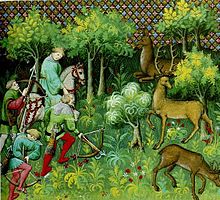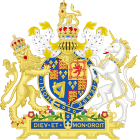
The Forest of Dean is a geographical, historical and cultural region in the western part of the county of Gloucestershire, England. It forms a roughly triangular plateau bounded by the River Wye to the west and northwest, Herefordshire to the north, the River Severn to the south, and the City of Gloucester to the east.
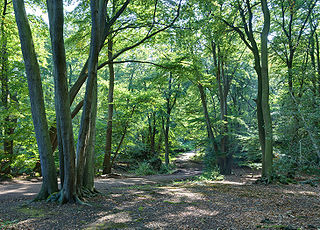
Epping Forest is a 2,400-hectare (5,900-acre) area of ancient woodland, and other established habitats, which straddles the border between Greater London and Essex. The main body of the forest stretches from Epping in the north, to Chingford on the edge of the London built-up area. South of Chingford the forest narrows, and forms a green corridor that extends deep into East London, as far as Forest Gate; the forest's position gives rise to its nickname, the Cockney Paradise. It is the largest forest in London.

The New Forest is one of the largest remaining tracts of unenclosed pasture land, heathland and forest in Southern England, covering southwest Hampshire and southeast Wiltshire. It was proclaimed a royal forest by William the Conqueror, featuring in the Domesday Book.
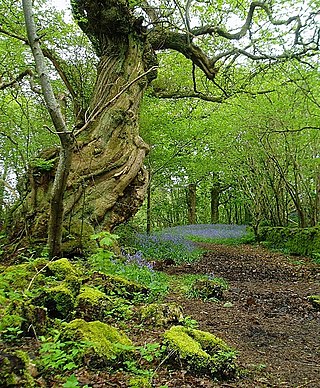
In the United Kingdom, ancient woodland is that which has existed continuously since 1600 in England, Wales and Northern Ireland. Planting of woodland was uncommon before those dates, so a wood present in 1600 is likely to have developed naturally.
Verderers are forestry officials in England who deal with common land in certain former royal hunting areas which are the property of the Crown. The office was developed in the Middle Ages to administer forest law on behalf of the King. Verderers investigated and recorded minor offences such as the taking of venison and the illegal cutting of woodland, and dealt with the day-to-day forest administration. In the modern era, verderers are still to be found in the New Forest, the Forest of Dean, and Epping Forest, where they serve to protect commoning practices, and conserve the traditional landscape and wildlife.

Wychwood or Wychwood Forest is a 501.7-hectare (1,240-acre) biological Site of Special Scientific Interest north of Witney in Oxfordshire. It is also a Nature Conservation Review site, Grade 1, and an area of 263.4 hectares is a national nature reserve The site contains a long barrow dating to the Neolithic period, which is a scheduled monument.

Pannage is the practice of releasing livestock-pigs in a forest, so that they can feed on fallen acorns, beechmast, chestnuts or other nuts. Historically, it was a right or privilege granted to local people on common land or in royal forests across much of Europe. The practice was historically referred to as Eichelmast or Eckerich in German-speaking Europe while the fee to feed one's livestock in such a way was historically referred to as žirovina in Croatia and Slovenia.
The Epping Forest Keepers are an ancient and historic body of people who are employed by the City of London, who in return are responsible, on behalf of the Conservators, for the management and care of Epping Forest, which covers approximately ten square miles of forest, bridleway, woodland and recreational space stretching from Forest Gate in east London, north to North Weald in Essex. The forest is managed by the City of London Corporation and is one of many open spaces that comes under their control that is outside the Square Mile that are maintained by the Corporation of London at no expense to the taxpayer.
A free warren—often simply warren—is a type of franchise or privilege conveyed by a sovereign in medieval England to an English subject, promising to hold them harmless for killing game of certain species within a stipulated area, usually a wood or small forest. The sovereign involved might be either the monarch or a marcher lord.

The Charter of the Forest of 1217 is a charter that re-established for free men rights of access to the royal forest that had been eroded by King William the Conqueror and his heirs. Many of its provisions were in force for centuries afterwards. It was originally sealed in England by the young King Henry III, acting under the regency of William Marshal, 1st Earl of Pembroke.

Chase is a term used in the United Kingdom to define a type of land reserved for hunting use by its owner. Similarly, a Royal Chase is a type of Crown Estate by the same description, where the hunting rights are reserved for a member of the British Royal Family.

The Forests of Mara and Mondrem were adjacent medieval forests in Cheshire, England, which in the 11th century extended to over 60 square miles (160 km2), stretching from the Mersey in the north almost to Nantwich in the south, and from the Gowy in the west to the Weaver in the east. Mara and Mondrem were a hunting forest of the Norman Earls of Chester, established soon after 1071 by the first earl, Hugh d'Avranches. They might earlier have been an Anglo-Saxon hunting forest. Game included wild boar, and red, fallow and roe deer.

The royal Forest of Galtres was established by the Norman kings of England in North Yorkshire, to the north of the Ancient City of York, extending right to its very walls. The main settlement within the royal forest was the market village of Easingwold, but in 1316 the forest comprised 60 villages in 100,000 acres. The Forest of Galtres was intimately connected with York: Davygate in the city was the site of the forest court and prison, a royal liberty within the city of York; Davygate, from which the forest was administered, commemorates David Le Lardiner, whose father, John the Lardiner, was the Royal Lardiner for the Forest of Galtres, a title which became hereditary in the family. During the reign of Henry II, the Forest stood at its greatest extent, but by the fifteenth century, concerns were being voiced over the extent of deforestation.

Feckenham Forest was a royal forest, centred on the village of Feckenham, covering large parts of Worcestershire and west Warwickshire. It was not entirely wooded, nor entirely the property of the King. Rather, the King had legal rights over game, wood and grazing within the forest, and special courts imposed harsh penalties when these rights were violated. Courts and the forest gaol were located at Feckenham and executions took place at Gallows Green near Hanbury.

Malvern Chase was a royal chase that occupied the land between the Malvern Hills and the River Severn in Worcestershire and extended to Herefordshire from the River Teme to Cors Forest.
Cyril Edwin Hart OBE was an English forestry expert, author, and historian.
In the New Forest a verderer is an unpaid officer whose duty is to regulate and protect the interests of the New Forest commoners, and to preserve the natural beauty and good traditional character of the Forest. There are ten verderers, together constituting the Court of Verderers.
A New Forest commoner is a person who has recognized historical rights associated with the New Forest area of Southern England. The term is used both for a practitioner of the heritage agricultural vocation of commoning, and also a cultural minority native to the area. They are closely associated with the New Forest pony. In 2020, there were about 700 New Forest commoners.
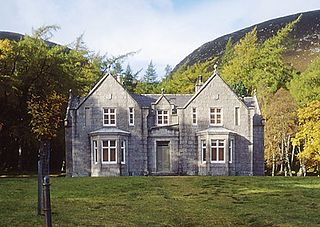
In Great Britain and Ireland a sporting lodge – also known as a hunting lodge, hunting box, fishing hut, shooting box, or shooting lodge – is a building designed to provide lodging for those practising the sports of hunting, shooting, fishing, stalking, falconry, coursing and other similar rural sporting pursuits.

